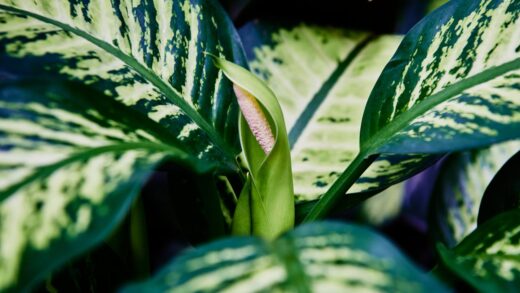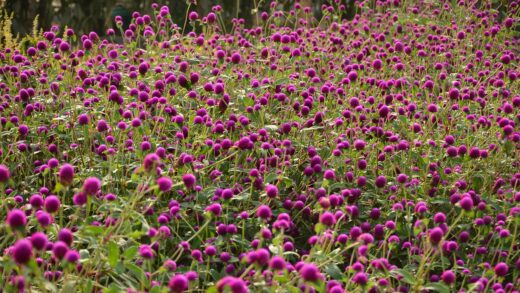Successfully cultivating basil, a staple in countless culinary traditions, extends far beyond simply placing a seed in soil and hoping for the best. It requires a nuanced understanding of the plant’s fundamental needs, from its environmental preferences to its specific nutritional requirements. Proper care is a continuous process of observation and response, ensuring the plant not only survives but thrives, producing an abundance of aromatic leaves. This commitment involves creating an optimal growing environment that mimics its native Mediterranean habitat, which is characterized by ample sunlight, warmth, and well-drained soil. Mastering these foundational elements is the first and most critical step toward a bountiful harvest of this cherished herb.
Achieving vigorous growth begins with selecting the right location, as this decision profoundly impacts the plant’s overall health and productivity. Basil craves sunlight and heat, making a spot that receives at least six to eight hours of direct sunlight daily an absolute necessity for its development. Insufficient light will lead to leggy stems, sparse foliage, and a significant reduction in the essential oils that give basil its characteristic flavor and aroma. Furthermore, the chosen site should offer protection from strong, persistent winds, which can damage the delicate leaves and stems, causing stress to the plant and potentially stunting its growth. Whether planted in a garden bed, a raised container, or a pot on a balcony, the location must be thoughtfully considered to meet these core requirements.
The quality of the growing medium is another cornerstone of successful basil cultivation, as it directly influences root health and nutrient uptake. Basil flourishes in rich, moist, yet well-draining soil with a pH level that is slightly acidic to neutral, ideally between 6.0 and 7.0. Poorly draining, heavy clay soils can lead to waterlogged roots, a condition that fosters the development of fungal diseases like root rot, which can be fatal. To prevent this, amending the soil with organic matter such as compost or well-rotted manure is highly recommended. This practice not only improves soil structure and drainage but also provides a slow-release source of essential nutrients, creating an ideal foundation for a robust root system.
Consistent and appropriate care practices throughout the growing season are paramount for maintaining plant vigor and maximizing leaf production. Regular harvesting, for instance, is not just about gathering leaves for culinary use; it also encourages the plant to become bushier and more productive. By regularly pinching off the top sets of leaves, you stimulate lateral growth, preventing the plant from becoming tall and spindly. Additionally, it is crucial to remove any flower buds that appear, as allowing the plant to flower signals the end of its life cycle, causing the leaves to lose their flavor and the plant to cease foliage production. This diligent attention to detail ensures a continuous supply of fresh basil throughout the season.
Soil preparation and planting
Proper soil preparation is a critical preliminary step that lays the groundwork for a healthy and productive basil plant. Before planting, it is essential to cultivate the soil to a depth of at least six to eight inches, breaking up any large clumps and removing rocks or debris. This process aerates the soil, allowing for better root penetration and development. Integrating a generous amount of organic compost or aged manure into the soil at this stage is highly beneficial. This amendment enriches the soil with vital nutrients, improves its texture, and enhances its ability to retain moisture while still allowing excess water to drain away effectively, striking the perfect balance for basil’s sensitive root system.
More articles on this topic
When the soil has been adequately prepared, the next step is the physical act of planting. If you are starting with seeds, they should be sown shallowly, about a quarter of an inch deep, as they require light to germinate. For a continuous harvest, it’s a good practice to sow seeds every few weeks during the spring and early summer. If you are transplanting seedlings that you started indoors or purchased from a nursery, ensure they are hardened off first. This process involves gradually exposing the young plants to outdoor conditions over a week to prevent transplant shock. When planting, space the seedlings about ten to twelve inches apart to allow for adequate air circulation and room to grow into bushy, mature plants.
After placing the seeds or seedlings in their new home, watering them in thoroughly is a crucial step. This initial watering helps to settle the soil around the roots, eliminating any air pockets that could otherwise cause the roots to dry out. It is important to use a gentle stream of water to avoid dislodging the delicate seeds or young plants. The soil should be made evenly moist but not saturated. This first drink provides the necessary hydration for the plant to begin establishing its root system in the new environment, a process that is vital for its long-term survival and growth.
Finally, applying a layer of organic mulch around the base of the newly planted basil can provide numerous benefits. Mulch, such as straw, shredded bark, or compost, helps to suppress weed growth, which would otherwise compete with the basil for water and nutrients. It also plays a crucial role in regulating soil temperature, keeping it cooler in the heat of summer and warmer during cooler nights. Most importantly, mulch helps to conserve soil moisture by reducing evaporation from the surface. This means you will need to water less frequently, and the plants will have a more consistent supply of moisture available to their roots.
Watering and moisture management
Effective watering is a delicate balance that is fundamental to the health of basil plants. The primary goal is to maintain consistently moist soil without creating waterlogged conditions, which can be detrimental. Basil prefers its soil to be evenly hydrated, so it’s important to avoid the cycle of letting the soil dry out completely and then drenching it. The best method is to check the soil moisture regularly by inserting a finger about an inch deep. If the soil feels dry at that depth, it is time to water. This hands-on approach is far more effective than adhering to a rigid, predetermined watering schedule, as the plant’s needs can fluctuate based on weather conditions.
More articles on this topic
The technique used for watering also plays a significant role in preventing common diseases. It is highly recommended to water basil at the base of the plant, directly onto the soil, rather than using an overhead sprinkler system. Watering from above can leave the foliage wet for extended periods, creating an ideal environment for fungal pathogens like downy mildew and powdery mildew to take hold. By applying water directly to the root zone, you ensure that the moisture gets exactly where it is needed most while keeping the leaves dry. This practice is especially important during humid weather or when plants are grown in densely packed areas with limited air circulation.
The time of day you choose to water your basil can also impact its health and water use efficiency. The optimal time to water is in the early morning. This allows the plant ample time to absorb the moisture it needs to get through the heat of the day. Watering in the morning also ensures that any moisture that does splash onto the leaves has plenty of time to evaporate in the sunlight, minimizing the risk of fungal diseases. Watering in the late evening is less ideal because the foliage may remain damp overnight, increasing the risk of pathogen development. Midday watering, especially on sunny days, can be inefficient due to high rates of evaporation.
Container-grown basil has slightly different watering requirements compared to plants grown in a garden bed. Pots and containers tend to dry out much more quickly, especially on hot, windy days. Therefore, you will likely need to water containerized basil more frequently, possibly even daily during peak summer conditions. It is crucial to use pots with adequate drainage holes to prevent water from accumulating at the bottom, which can lead to root rot. When watering containers, continue to apply water until you see it begin to flow out of the drainage holes, which ensures that the entire root ball has been thoroughly moistened.
Sunlight and temperature requirements
Sunlight is arguably the most critical environmental factor for growing flavorful and robust basil. This herb is a true sun-worshipper, demanding a minimum of six to eight hours of direct, unfiltered sunlight each day to thrive. This intense light exposure is essential for the process of photosynthesis, which fuels the plant’s growth and, importantly, the production of the aromatic essential oils that define its culinary value. When basil receives inadequate sunlight, it undergoes etiolation, resulting in weak, elongated stems, smaller leaves, and a significantly diminished flavor profile. For this reason, selecting the sunniest available spot in your garden or on your patio is non-negotiable for a successful harvest.
Beyond the duration of sunlight, the intensity also matters, yet there is a point where it can become too much of a good thing, particularly in extremely hot climates. While basil loves sun, it can suffer from sunscald or heat stress if exposed to scorching afternoon sun in regions with intense summer heat. In such environments, providing some light afternoon shade can be beneficial. This can be achieved by strategically planting it where a taller plant or a structure casts a shadow during the hottest part of the day. This protection helps prevent the leaves from wilting or becoming scorched, allowing the plant to continue its metabolic processes without undue stress.
Temperature is another key factor that governs the life cycle and vitality of basil. As a plant native to warm, tropical regions, it is highly sensitive to cold and has zero tolerance for frost. The ideal temperature range for basil growth is between 70°F and 85°F (approximately 21°C to 29°C). Growth will slow considerably when temperatures drop below 60°F (15°C), and temperatures below 50°F (10°C) can cause damage to the leaves, often turning them black. It is crucial, therefore, to wait until all danger of frost has passed in the spring and soil temperatures have warmed sufficiently before planting basil outdoors.
This sensitivity to cold also means that in most temperate climates, basil is grown as an annual. As autumn approaches and temperatures begin to fall, the plant’s growth will naturally decline. The first light frost will typically kill the plant, signaling the end of the outdoor growing season. For gardeners wishing to extend their harvest, it is possible to grow basil indoors in a pot, provided it can be placed in a very sunny windowsill or under a grow light. Maintaining a stable indoor temperature and providing sufficient light are the keys to keeping a basil plant productive through the colder months.
Pruning and harvesting for continuous growth
Regular pruning is not just a method of harvesting basil; it is the most important technique for encouraging a healthy, bushy plant and maximizing its yield throughout the season. The primary goal of pruning is to prevent the plant from flowering and to stimulate the growth of new side shoots. To do this correctly, you should locate the central stem and snip it just above a set of two large leaves. This action forces the plant to divert its energy into producing two new stems from the leaf axils at that node, effectively doubling the number of growing tips. This process should be started early, when the plant is about six inches tall, and repeated every two to three weeks.
The timing and frequency of harvesting are directly linked to the pruning process. It’s best to harvest basil in the morning, after the dew has dried but before the sun becomes too intense. At this time, the leaves are at their most hydrated and the concentration of essential oils is at its peak, resulting in the best flavor and aroma. Avoid harvesting more than one-third of the plant’s total foliage at any single time, as removing too much can stress the plant and inhibit its ability to recover and produce new growth. A steady, regular approach to harvesting ensures a continuous supply of fresh leaves without overwhelming the plant.
A crucial aspect of ongoing care is the vigilant removal of any flower buds that form. When a basil plant is allowed to flower, it enters a reproductive phase, a process often referred to as ‘bolting’. This hormonal shift signals to the plant that its life cycle is nearing its end, and as a result, it channels its energy into producing seeds rather than new leaves. This has a dramatic and undesirable effect on the culinary quality of the herb; the leaves become smaller, tougher, and can develop a bitter taste. By diligently pinching off flower spikes as soon as you see them, you can trick the plant into remaining in its vegetative, leaf-producing stage for much longer.
The way you make your pruning cuts is also important for the plant’s health. Always use clean, sharp scissors or pruning snips to make your cuts. This ensures a clean wound that will heal quickly, reducing the risk of disease pathogens entering the plant through a ragged tear. When you prune a stem, make the cut just above a leaf node (the point on the stem where a pair of leaves emerges). This is where the plant’s growth hormones are concentrated, and it is from these nodes that new stems will sprout, leading to the desired bushy and compact growth habit that yields the most abundant harvest.
Fertilization and nutrient management
While preparing the soil with rich organic matter provides a strong nutritional foundation, basil is a relatively heavy feeder and will benefit from supplemental fertilization throughout its active growing season. Providing a steady supply of nutrients ensures the plant has the resources it needs to continuously produce lush, flavorful foliage. However, it’s a matter of balance, as over-fertilization can be just as detrimental as under-fertilization. The key is to provide a consistent but moderate feeding schedule that supports vigorous growth without forcing it to a point where the flavor of the leaves is compromised.
The type of fertilizer you choose is important for achieving the desired outcome, which is abundant leaf production. For basil, it is best to use a balanced, all-purpose liquid fertilizer, preferably one that is formulated for herbs or vegetables. It’s advisable to dilute the fertilizer to half the strength recommended on the package instructions. This less-concentrated application, provided more frequently (perhaps every two to three weeks), delivers a steady nutrient supply without overwhelming the plant. Avoid high-nitrogen fertilizers, as while they promote rapid green growth, they can do so at the expense of the essential oil concentration, leading to leaves that are large but lack intense flavor.
Observing the plant’s appearance is one of the best ways to gauge its nutritional needs. A healthy, well-fed basil plant will have vibrant, deep green leaves and sturdy stems. If you notice the leaves starting to turn a pale green or yellow, particularly the lower ones, it could be a sign of a nitrogen deficiency, indicating that it’s time to fertilize. Conversely, if the plant’s growth is excessively rapid and the foliage appears overly lush but lacks a strong aroma, you may be over-fertilizing, particularly with nitrogen. Learning to read these visual cues from your plant allows you to adjust your feeding regimen accordingly.
For those who prefer a purely organic approach, there are several excellent alternatives to synthetic liquid fertilizers. A top-dressing of well-rotted compost or worm castings applied around the base of the plant mid-season can provide a gentle, slow-release boost of nutrients. Another effective option is to use organic liquid feeds like compost tea or a fish emulsion fertilizer. These organic options not only feed the plant but also nourish the soil’s microbial life, contributing to a healthier overall growing environment. Regardless of the method chosen, consistent nutrient management is a key component of a comprehensive basil care strategy.


















